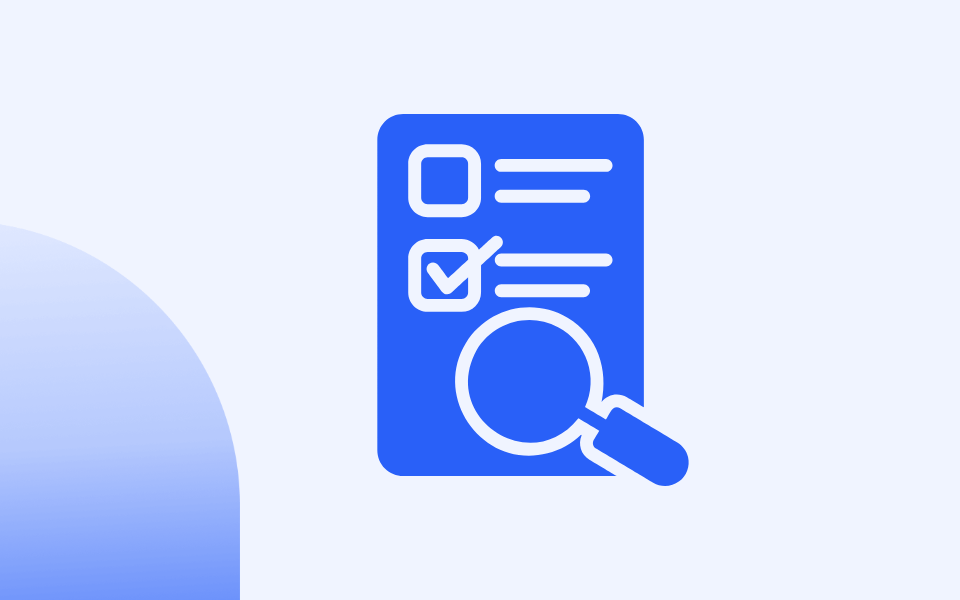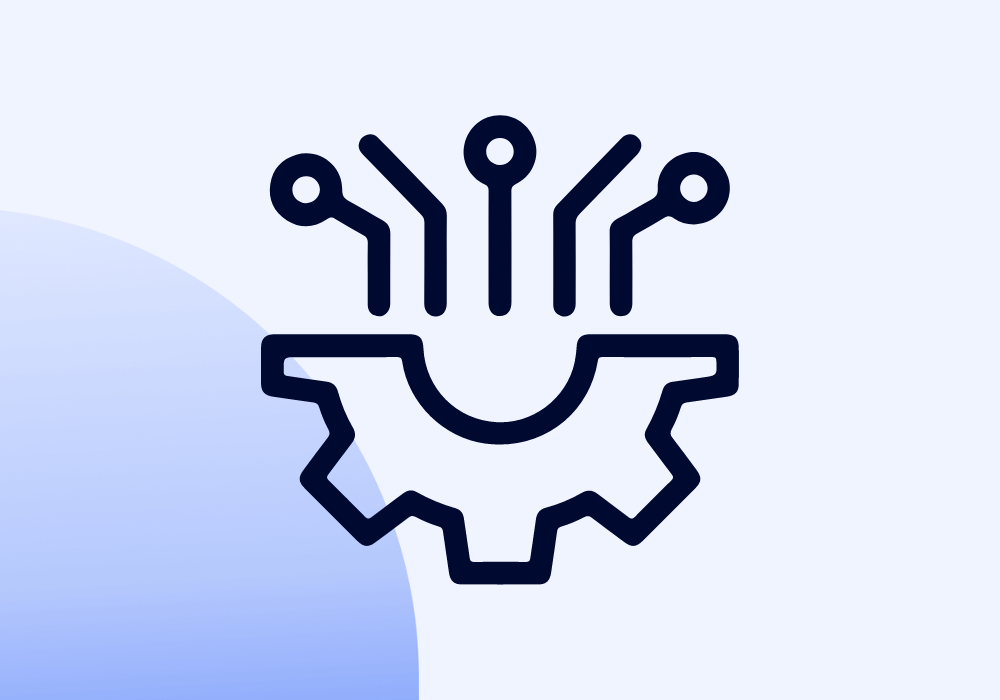Elevate Your Marketing Strategy with HubSpot Campaigns [2024]
How to Perform a Comprehensive HubSpot Audit [FREE CHECKLIST]

Your HubSpot portal can perform much better than it does right now.
We've audited many HubSpot portals over the years and found that most businesses lack critical optimization opportunities.
What are the most common issues? Messy workflows, data silos, and misaligned tools that cost companies thousands in wasted resources.
Free HubSpot Audit Checklist: Optimize Your HubSpot Usage for Maximum Impact and ROI
This comprehensive guide walks you through the exact audit process we use with our clients.
You'll learn to evaluate all the HubSpot hubs, fix the most expensive mistakes, and transform your HubSpot portal into a revenue-generating machine.
Best part? You can complete this audit in a few hours.
- Why a HubSpot Audit Matters
- What Exactly Is a HubSpot Audit?
- HubSpot Marketing Audit
- HubSpot Sales Audit
- HubSpot Service Audit
- HubSpot Content Audit
- HubSpot Operations Audit
Why a HubSpot Audit Matters
If you’ve been using HubSpot for years or are just getting started, an audit will uncover inefficiencies, fine-tune workflows, and ensure your portal delivers a return on investment.
A HubSpot audit is ideal if you are looking to:
1. Generate More Leads: Audit landing pages, workflows, and content performance to optimize lead conversion and identify high-performing formats.
2. Increase Website and SEO Traffic: Review SEO and content strategy, focusing on keyword rankings, meta descriptions, and overall visibility.
3. Increase Brand Awareness: Evaluate campaigns to ensure they reach the right audience and align with your brand’s growth goals.
4. Improve Conversion Paths: Assess CTAs, landing pages, and forms to enhance users' conversion experience.
5. Streamline Sales Pipeline and Forecasting: Simplify deal stages and refine sales automation and reporting for clear, actionable insights into sales progression and future sales.
6. Increase Customer Satisfaction: Review the ticketing system for response times and optimize the knowledge base or help center for customer accessibility.
7. Clean Up CRM Data: Remove outdated or duplicate entries and verify email addresses to improve data accuracy, deliverability, and system efficiency.
Free HubSpot Audit Checklist: Optimize Your HubSpot Usage for Maximum Impact and ROI
When your HubSpot portal isn’t aligned with your current goals, inefficiencies can creep in, wasting time and money. That’s why running a regular HubSpot audit is crucial.
By conducting an audit, you can catch issues before they snowball, such as redundant workflows, insufficient data, or underperforming marketing campaigns.

What Exactly Is a HubSpot Audit?
A HubSpot audit is a deep dive into your entire HubSpot portal.
It’s not just a quick check—it’s about evaluating how well your HubSpot setup is performing, where inefficiencies might be hiding, and whether everything is aligned with your goals.
You’ll examine every aspect of your marketing, sales, service tools, workflows, and system data.
Here’s why an audit can make a big difference:
1. Uncover Features You Didn’t Know About:
HubSpot has many powerful tools, but it’s easy to miss features that could improve your business. An audit helps you to identify unused features you can leverage to grow.
2. Improve Campaign Performance:
Whether it’s adjusting automation rules or refining your messaging, your marketing campaigns can always be improved.
3. Clean Up Your HubSpot Data:
Outdated or duplicate data can mess up your CRM, making it harder to segment contacts or run targeted campaigns. An audit lets you clean things up and ensure your data is accurate.
4. Spot Inefficiencies:
An audit helps identify bottlenecks in your system, such as workflows needing updating or tools not being used to their full potential. Fixing these can help streamline your operations.
5. Optimize Your Platform’s Performance:
A well-tuned HubSpot portal can significantly impact your bottom line. The audit ensures everything is set up to generate leads, close deals, and improve customer satisfaction.
6. Reduce License Costs:
You might be paying for unnecessary marketing contacts or dealing with duplicate data, driving up costs. A HubSpot audit helps you trim the fat and reduce waste.
7. Maximize Your ROI:
You’re paying for a powerful tool—ensure you get the most out of it. An audit ensures that you’re using HubSpot efficiently, improving workflows, and using your data best to see actual returns.
8. Ensure Compliance:
HubSpot holds much customer data, so regular audits are crucial to complying with regulations like GDPR and CCPA. This helps protect your business from potential risks and fines.
Free HubSpot Audit Checklist: Optimize Your HubSpot Usage for Maximum Impact and ROI
HubSpot Marketing Audit
A thorough audit of your Marketing Hub can reveal insights into how well your marketing efforts drive traffic, generate leads, and support your overall business goals. Here’s how to break it down:
Target Accounts
- Ensure target account features are activated in your portal.
- Define and segment target accounts into tiers (1-3).
- Create lists and workflows to segment contacts into buyer roles.
Campaigns
- Link each campaign's assets (emails, social posts, and landing pages).
- Set and track campaign KPIs, such as engagement and conversions.
- Create custom tracking URLs to monitor traffic from paid channels or outbound emails.
- Ensure each campaign has a straightforward naming convention and color coding.
Lists
- Maintain active lists for all lifecycle stages, including Lead, SQL, and Customer.
- Remove duplicate and bounced contacts from your portal.
- Use consistent naming conventions for easy identification.
- Set up email performance tracking dashboards (open rates, CTR).
- Configure SPF, DMARC, and DKIM to reduce spam risks.
- Save branded email templates for newsletters in the portal.
Social
- Connect all relevant social media profiles to HubSpot.
- Schedule posts in advance and optimize content for each platform.
Ads
- Track ad performance metrics like clicks, engagement, and reach for optimization.
- Integrate all ad accounts with HubSpot and set up ROI tracking.
- Sync target account lists with LinkedIn Ads for targeted campaigns.
Forms
- Place forms on high-traffic pages and landing pages.
- Enable progressive profiling to boost form conversions.
- Monitor and optimize form performance for better conversion rates.
CTA (Calls-to-Action)
- Place CTAs strategically on the website and relevant pages.
- Use clear, action-oriented text to drive engagement.
- Implement smart CTAs to deliver personalized content.
Workflows
- Set up workflows for lead nurturing, onboarding, and re-engagement.
- Configure workflows to change lifecycle stage and lead status automatically.
- Use logical naming conventions and organize workflows into folders.
- Set workflows to notify sales teams about essential leads and deal updates.
Buyer Intent
- Activate Buyer Intent with Breeze AI to identify and enrich records.
- Define target markets within HubSpot.
- Set intent criteria to filter companies that show buying readiness.
SEO
- Set up topics and keywords within the SEO tools.
- Integrate Google Search Console with HubSpot.
- Optimize page titles and meta descriptions for organic search.
Reporting
- Create marketing reports for lead generation, campaigns, and traffic.
- Build custom dashboards for a high-level performance overview.
- Ensure reports align with marketing goals and are regularly updated.
HubSpot Sales Audit
Your Sales Hub is where deals happen, so ensuring it’s working as efficiently as possible is crucial. Here’s a breakdown of what to focus on during your audit:
Target Accounts
- Tag high-value companies as target accounts.
- Segment target accounts into tiers based on value.
- Categorize contacts into buyer roles.
Deal Pipeline
- Align pipeline stages with the sales process and buyer journey.
- Implement required properties at each deal stage for accurate sales data.
- Set up workflows to notify sales when deals are past the close date.
Templates
- Use personalization variables in templates to engage recipients.
- Create templates for various outreach campaigns (e.g., webinars, follow-ups).
- Organize templates by use case in folders for easy access.
Snippets
- Convert common questions and objections into snippets.
- Organize snippets in folders by use case.
Sequences
- Tailor sequences to lead nurturing and customer journey stages.
- Combine emails, tasks, and calls for effective follow-up.
- Track performance metrics (open rates, reply rates) for optimization.
Documents
- Upload sales documents (product sheets, case studies) for easy access.
- Enable engagement tracking for document performance insights.
Quotes
- Keep pricing and product descriptions updated in the Products tool.
- Customize quote templates with brand colors and logo.
Playbooks
- Develop playbooks for scenarios (e.g., objection handling, discovery).
- Ensure each playbook has a clear structure and guidance for reps.
Meetings
- Complete meeting tool setup for prospect scheduling.
- Keep rep availability updated to prevent scheduling conflicts.
- Create specific meeting types (e.g., demos) as needed.
Reporting
- Align sales reports with key performance metrics.
- Customize dashboards for real-time team performance visibility.
- Regularly review and update reports for strategic accuracy.
- Provide stakeholders with dashboard access for informed decisions.
HubSpot Service Audit
Your Service Hub plays a significant role in keeping customers happy, so auditing it regularly can help ensure you're providing top-notch support. Here’s what to focus on during your audit:
Ticket Pipeline
- Align ticket pipeline stages with the service process.
- Automate notifications and assignments.
- Schedule regular CSAT and NPS surveys throughout the customer lifecycle.
Templates
- Use personalization variables to engage recipients.
- Create templates for common customer interactions (e.g., FAQs, knowledge base links).
- Organize templates by use case for easy access.
Snippets
- Provide snippets for frequently asked questions and common issues.
- Keep snippets concise and easy to use.
- Monitor snippet usage for relevance.
Sequences
- Align sequences with support and follow-up needs.
- Ensure content is personalized and relevant.
Documents
- Provide relevant, easily accessible documents for service reps.
- Track engagement metrics (views, shares) on documents.
- Organize documents for quick search and retrieval.
Knowledge Base
- Cover common questions and issues in the knowledge base.
- Keep articles clear, concise, and visual as needed.
- Monitor performance and feedback for continuous improvement.
Customer Portal
- Provide portal access for existing customers to view tickets.
- Connect the portal to a company subdomain.
Playbooks
- Create playbooks for common support scenarios.
- Ensure playbooks are easy to follow and updated based on team input.
- Regularly review for relevance and accuracy.
Meetings
- Enable direct scheduling with reps through the meetings tool.
- Define availability and meeting types clearly.
- Monitor booking trends to adjust availability and types based on customer needs.
Reporting
- Track key metrics (response time, resolution rate, CSAT) in reports.
- Align reports with service goals and team performance.
- Regularly review and update dashboards to reflect insights and improve service processes.
Free HubSpot Audit Checklist: Optimize Your HubSpot Usage for Maximum Impact and ROI
HubSpot Content Audit
Your Content Hub is the foundation for engaging your audience, driving traffic, and generating leads. A well-maintained and optimized Content Hub can significantly impact your business.
Here’s how to audit it effectively:
Domains
- Activate SSL on all connected domains for secure browsing.
- Set URL redirects to establish a consistent URL structure, such as redirecting from
https://website.comtohttps://www.website.com(or vice versa) to ensure a single primary URL format.
Website Pages
- Include a primary call-to-action (CTA) in the main navigation.
- Assign each page a unique page title, meta description, and logical URL.
- Use conversion-focused elements like sticky CTAs to guide visitors toward desired actions.
Landing Pages
- Create dedicated landing pages for specific campaigns, ad groups, or audience segments.
- Use dynamic content to tailor landing pages based on visitor attributes or past interactions.
- Include social proof, like testimonials or well-known client logos, to boost credibility.
Blog
- Implement a content cluster strategy to link related blog posts, product, and pricing pages, enhancing SEO.
- Organize posts with topic tags for better navigation.
- Use HubSpot’s blog analytics to identify underperforming posts and optimize them with improved CTAs or updated keywords.
Case Studies
- Maintain a library of customer success stories.
- Use multimedia elements like videos or infographics in case studies for higher engagement.
- Include client testimonials or specific, measurable outcomes to add impact.
SEO
- Add high-value keywords to the SEO tool and organize them into clusters.
- Internally link content to boost page authority.
Reporting
- Establish weekly or monthly reporting cadences to update stakeholders on content performance using automated HubSpot dashboards.
- Set goals to measure objectives like revenue or sales activity.
HubSpot Operations Audit
Your Operations Hub is the engine that keeps your business running smoothly. It’s responsible for syncing data, managing automation, and ensuring everything works together seamlessly.
A regular audit can ensure your Operations Hub is performing at its best. Here’s what to focus on:
Integrations
- Ensure critical systems are integrated with HubSpot.
- Confirm data syncs and updates correctly.
- Remove duplicate or outdated integrations.
- Verify that integrations support workflows and reporting.
Custom Events
- Track key user actions through custom events.
- Capture meaningful data for segmentation or scoring.
- Ensure custom events are accurate and relevant.
- Use custom event data in workflows and reporting.
Data Quality
- Utilize deduplication tools to remove duplicates.
- Set up error correction and field validation.
- Monitor data quality metrics regularly.
- Establish regular data hygiene routines.
Datasets
- Align datasets with key metrics and KPIs.
- Structure datasets to support detailed reporting.
- Review and update datasets regularly.
- Encourage team use of datasets for insights.
Data Model
- Align the data model with business processes.
- Maintain accurate relationships between objects.
- Use custom objects strategically.
- Keep data model documentation up-to-date.
Data Enrichment
- Connect data enrichment sources to HubSpot.
- Ensure enrichment data is accurate and regularly updated.
- Use enriched data to improve segmentation and personalization.
- Regularly review the relevance of enrichment data.
Conclusion and Next Steps
- Summarize each section’s results in the table below to identify key areas for improvement.
- Review the audit summary and prioritize the most impactful changes.
- Implement improvements gradually and revisit this audit regularly to measure progress.

Ready to Get the Most Out of HubSpot?
A HubSpot audit isn’t just a one-time fix—it’s an ongoing task to align your platform with your business goals and maximize your investment in the HubSpot platform.
From cleaning up data to streamlining workflows and discovering hidden features, every audit helps you eliminate inefficiencies and unlock new opportunities.
Whether you’re looking to generate more leads, increase customer satisfaction, or improve team efficiency, regular audits ensure that HubSpot drives actual results for your business.
Here is what to do next:
1. Download our free HubSpot Audit Checklist to get started (Google Docs)
2. Request a personalized HubSpot audit for tailored insights and recommendations
![Elevate Your Marketing Strategy with HubSpot Campaigns [2024]](https://www.nettly.co/hubfs/images/blog/hubspot-campaigns.png)

